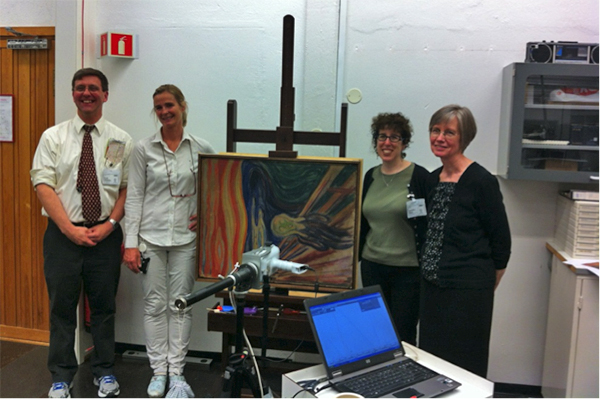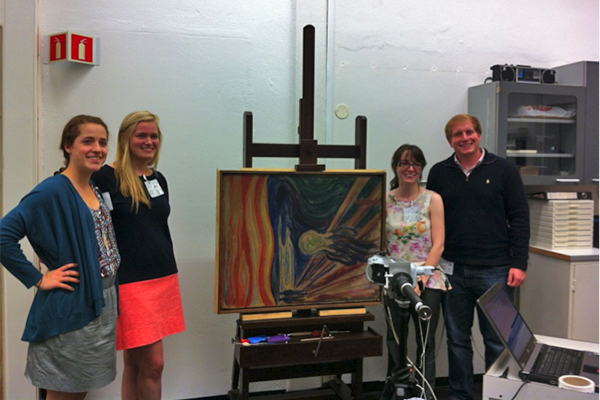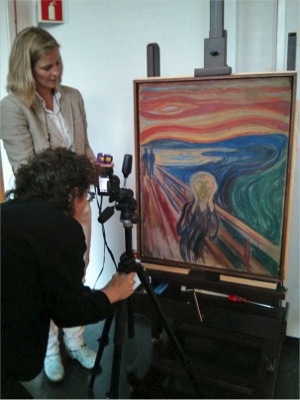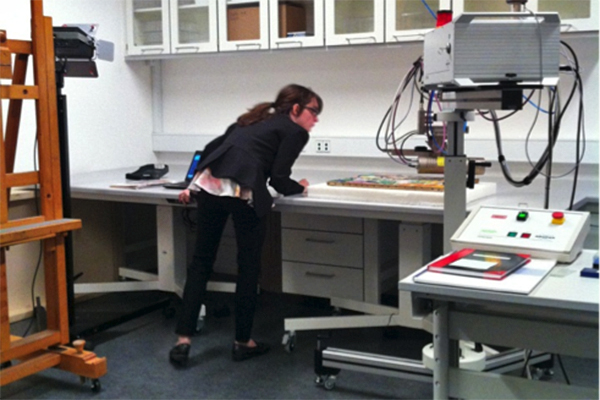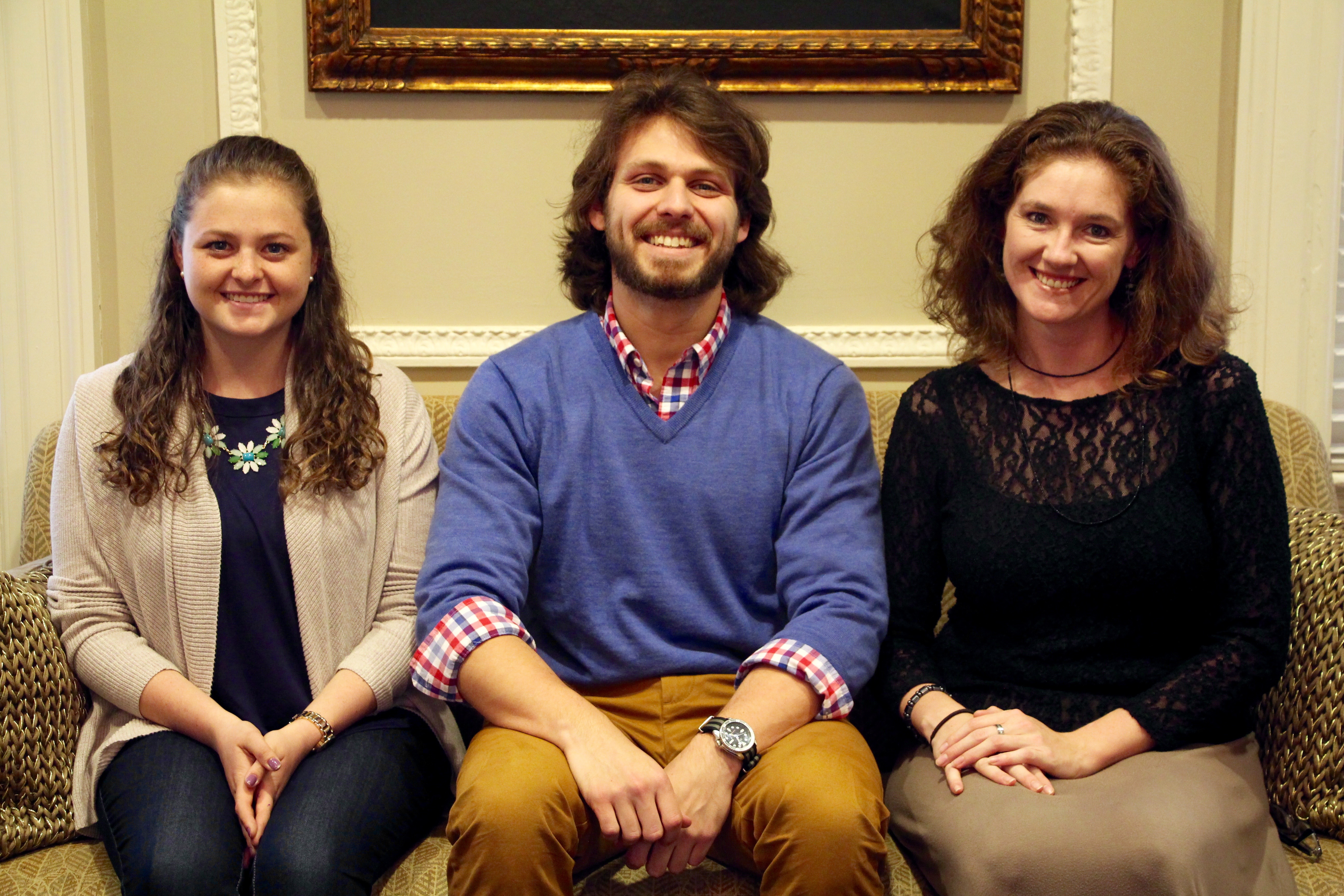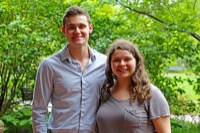A colorful science
Scientist, student conduct art conservation research in Europe
10:23 a.m., Aug. 2, 2013--Norwegian painter Edvard Munch’s iconic piece, The Scream, has been through quite a lot. The 1910 version of the painting housed in the Munch Museum in Oslo, Norway, was stolen in 2004 before finally being recovered in 2006. Now, another concern plagues the The Scream.
“The Scream is undergoing pigment degradation. Yellow areas are fading to white,” said Jennifer Mass, senior scientist at Winterthur Museum and an adjunct assistant professor of art conservation at the University of Delaware.
Global Stories
Fulbright awards
Peace Corps plans
Mass and Alyssa Hull, a UD Honors Program senior with double majors in chemistry and art conservation, spent two days in the Munch Museum with colleagues from the Barnes Foundation and Washington and Lee University analyzing the renowned work of art as part of a whirlwind trip through Europe this summer.
Hull and Mass used scientific research to determine why some of Europe’s prominent works of art are undergoing pigment change and, more importantly, how to stop or slow the process.
The duo’s tour de conservation began in France at the European Synchrotron Radiation Facility (ESRF) in Grenoble. There, they analyzed tiny samples — the size of a period — from works such as Henri Matisse’s Le Bonheur de Vivre and Adriaen Coorte’s Still Life with Apricots.
“We are looking for clues about why these paints are changing colors,” said Mass.
The intricate process involves casting the tiny samples into resin cubes and analyzing them for various pigments including cadmium yellow, orpiment and realgar.
Hull and Mass’ conservation work coincided perfectly with an international conference held at the University of Oslo from June 28-30.
The Edvard Munch and his Contemporaries Meeting, held in celebration of the 150th anniversary of Munch’s birth, served as the perfect forum for Hull and Mass to present their research and meet other researchers dedicated to demystifying the process of pigment degradation.
“One of my favorite parts of the trip was the conference in Oslo,” said Hull. “We met two groups of people who had been working on this problem for close to 10 years. This is clearly an issue that’s happening on a much larger scale.”
Following the conference, Hull and Mass delved into their analysis of The Scream. Although their research confirmed the presence of pigment degradation, Mass said there are ways to thwart, or at least, slow the discoloration process.
“We can control the relative humidity in the museum. Controlling the light exposure is important as well,” she said.
The team rounded out their trip with an analysis of a piece closely related to Matisse’s Le Bonheur de Vivre in Copenhagen, Denmark, examining why one version of the painting was changing in color while the other was not.
Overall, the trip afforded both Mass and Hull with unparalleled opportunities to conduct first-hand research and collaborate with like-minded researchers.
“I’ve really enjoyed this experience and am so fortunate to have had it,” said Hull. “It has definitely cemented my desire to do both chemistry and art. I think I would like to do conservation science as a career.”
Having an art conservation program at a University is rare, according to Mass, conducting research with colleagues on another continent during summer break is even rarer.
“The opportunity to do museum research mixed with cutting edge scientific research is an opportunity that wouldn’t be available on-campus,” she said.
Support for the trip came from the Lenfest Foundation, the Barnes Foundation and the Winterthur Museum.
With funding from UD’s Undergraduate Research Program, Hull will continue her research — and begin her senior thesis — as part of the Summer Scholars program.
As Hull works on her thesis, her hands-on scientific analysis will no doubt come in handy. The fact that she spent her summer conducting research throughout Europe with her advisor will probably not hurt either.
Article by Kelley Bregenzer






